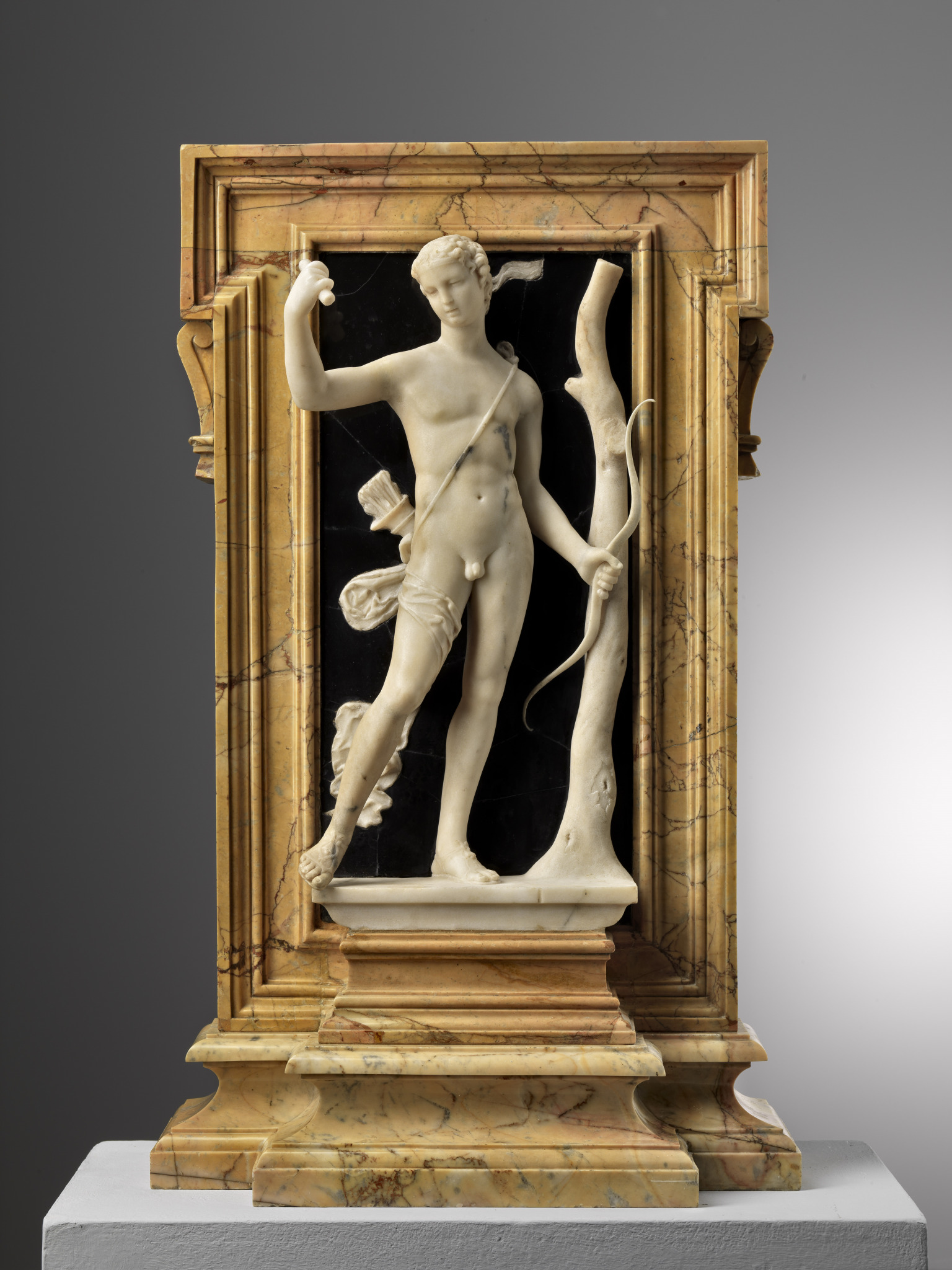Private Renaissance: Antonio Minello’s Apollo
Between different attributions, owners, and interpretations, we tell the troubled story of the carved Apollo by Antonio Minello
The Apollo by Antonio Minello (sometimes Antonio Minelli), a remarkable white marble relief, in actual fact a 77 cm. high figure carved almost wholly in the round, with a non-coeval giallo antico marble frame and standing out starkly against black marble slab, is a masterpiece of Renaissance sculpture which, while known to scholars for quite some time, has been largely overlooked by modern critics. Made public for the first time in the early 20th century, the Apollo reappeared on the antique market for the last time in 1965 before sinking once again below the waterline. It resurfaced only very recently thanks to Shelley Zuraw, who drew scholars’ attention to it in 2016 when she reproduced it as a piece whose whereabouts were unknown, in an article pessimistically entitled “A Lost Apollo”, and attributed it hypothetically to little-known Venetian Renaissance sculptor Antonio Minello.

The statue’s unique quality is not due solely to the rarity of such works which bear lofty witness to the civilisation of humanism in northern Italy and to the mood in the great 15th and 16th century courts of the Po Valley such as Ferrara and Mantua (a world of luxury and erudite sophistication of which Maria Bellonci paints a vivid fresco in her last and most celebrated work, a fictional autobiography of Isabella d’Este published with the evocative title of Private Renaissance in 1986), but also to its collecting history which we are extremely fortunate in being able to trace thanks to archive documents and to references in written works.
The Apollo attributed to Minello, which was probably carved in Padua at the time when humanism infused the cultural climate that flourished in and around the city’s Studio or university, and may well have once belonged to some learned collector in Venice or at the court of the Este or the Gonzaga, or in one of the university cities such as Padua itself or Bologna, is known to have been part of the collection of Costanzo Patrizi, one of the shrewdest patrons of the arts in early Baroque Rome, by the beginning of the 17th century. Another crucial chapter was added to the Apollo‘s important collecting history in the 19th and 20th centuries when it passed into the hands of Russian Count Grigoriy Sergeyevich Stroganoff, who amassed a vast and absolutely outstanding collection of works of art in Rome. That collection’s dispersal after the Count’s death sparked something of a controversy, with Roberto Longhi complaining that it was a grievous loss for Italy public heritage.

While an important 15th century Flemish tapestry, for example, was bought by the great art dealer Joseph Duveen (1869–1939), the Apollo, attributed at the time to Bambaia, went to an extremely wealthy and insatiable central European collector named Camillo Castiglioni, and thus ended up in Vienna. Beset by financial woes, however, Castiglioni was soon to put it up for sale again at a huge auction held in Amsterdam in 1925. Thus the unforeseeable vagaries of history eventually brought the relief into the hands of Giuseppe Sangiorgi (1850–1928), the owner of what was probably the most illustrious art gallery in early 20th century Rome, who had already acquired many of the former Stroganoff collection’s other highlights a few years earlier.
The Minello Apollo today is one of the very few Venetian Renaissance works of private sculpture on a secular theme not to have ended up in a major public collection. Most of the others belong to such leading foreign museums as the Musée du Louvre in Paris or the Victoria and Albert Museum in London, and the current international popularity of such pieces accurately mirrors the admiration that they have attracted since the early 16th century, when they were eagerly sought by important collectors also – indeed primarily – in northern Europe. Given that it was difficult, not to say well nigh impossible, to procure large Classical pieces or even modern originals after Classical works at the time, these marble reliefs carved in Padua (and most probably also in Venice) achieved instant popularity with the most illustrious international patrons thanks to their outstanding quality and to the fact that they were easy to transport, travelling swiftly in their capacity as virtual messengers holding aloft the banner of Renaissance Italy.

October 17, 2022
